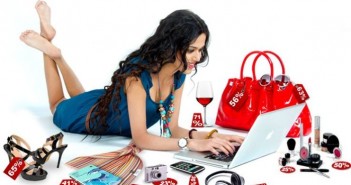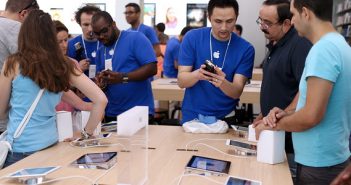Paco Underhill, who authored the book “Why We Buy,” claimed in his book that two-thirds of the shopping in malls involve impulse buying. It is true that most of the products we add to our carts are unplanned purchases. Purposeful buying, on the flip side, is when you realize you really need something and you visit the nearest mall or departmental store to buy it. When you realize that you are actually out of your shaving cream and you drive up to a store to get one, that’s your “actual state of affairs.”
“My mum says, ‘Go with your first instinct,’ but this can lead to impulse buying!” – Lindsay Lohan.
Here is the psychology behind Impulse buying:
 Impulse buying starts with exposure to products
Advertisements
Impulse buying starts with exposure to products
Advertisements

The impulse buying process begins when you get exposed to a product. In a mall setting, it actually works as the X-factor. This is the reason why you see a wall of impulse items in every shopping mall or mass market.
The quick-grab goodies you find near the checkout section of a shopping mall are in fact strategically placed. You see a pack of something, and right at that moment, you realize that your kitchen doesn’t have that item as yet. This is what market experts and analysts term as “problem recognition.” The moment you decide to buy the item, you move from “the actual state of affairs’ to “the desired state of affairs.”
 From pain to pleasure
From pain to pleasure
Most impulsive shoppers add items they chance upon in a shopping mall setting to their carts because they want to avoid the pain of not having those items. They also do so because they want to experience pleasure. Companies that sell consumer durables and dispensable products always keep this psychological factor in mind. These companies, in fact, invest big money in understanding consumer psyche. These little findings shape sales and marketing efforts.
 Seeing is almost buying
Seeing is almost buying
Buying in a retail setting is mostly about seeing the product. Specialty retailers reap this advantage of incredible visibility. They make more sales than, say, the small, nondescript shop just around the corner. These kiosk and car operators have the definitive edge over traditional stores. Why? Because they are more exposed to their customers and vice versa. Intelligent markets go a step ahead to demonstrate their products to their customers. This helps the customers in knowing the product besides seeing it. Another reason why kiosk owners beat traditional stores in competition is that kiosks easily catch the attention of the shoppers.
 Colors play a great role
Colors play a great role

Colors indeed play a pivotal role in drawing in more customers. Bright yellow, for example, is considered the most visible color. No wonder you see a lot of products wrapped in bright yellow in shopping malls. Humans easily interact with bright colors. Also, when you see high contrast color combinations, you get attracted to them.




